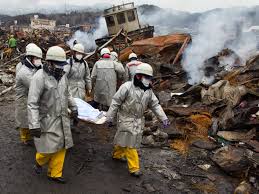The Impact of Disasters on Communities
Disasters, whether natural or man-made, have profound effects on communities around the world. From earthquakes and hurricanes to industrial accidents and pandemics, these events can leave lasting scars on individuals, families, and entire regions.
Immediate Effects
When a disaster strikes, the immediate effects can be devastating. Lives are lost, homes destroyed, and infrastructure damaged. Communities are left reeling as they struggle to cope with the sudden upheaval and loss. Emergency response teams rush to provide aid and support, but the impact of the disaster is felt far and wide.
Long-Term Consequences
As time passes, the long-term consequences of a disaster become apparent. Economic instability, mental health issues, and social dislocation are just some of the challenges that communities face in the aftermath. Rebuilding efforts take years, if not decades, and some communities may never fully recover.
Resilience and Recovery
Despite the immense challenges posed by disasters, communities often demonstrate remarkable resilience in the face of adversity. Through mutual support, resourcefulness, and determination, individuals come together to rebuild their lives and strengthen their bonds with one another. The road to recovery is long and arduous, but with perseverance and solidarity, communities can emerge stronger than before.
Preparedness and Prevention
While disasters cannot always be prevented, preparedness measures can significantly reduce their impact. Investing in early warning systems, emergency response training, and infrastructure resilience is crucial for mitigating the effects of disasters. By being proactive rather than reactive, communities can better protect themselves against future crises.
In Conclusion
Disasters have a profound impact on communities worldwide, testing their strength and resilience in times of crisis. By understanding the immediate effects, long-term consequences, and importance of preparedness measures, we can work together to build more resilient communities that are better equipped to withstand future challenges.
Top 5 Essential Tips for Disaster Preparedness and Safety
- Create an emergency plan for your household, including evacuation routes and meeting points.
- Prepare a disaster supply kit with essentials like water, non-perishable food, and first aid supplies.
- Stay informed about potential disasters in your area by following local news and alerts.
- Secure important documents and valuables in a waterproof and fireproof container.
- Practice drills regularly to ensure everyone knows what to do in case of a disaster.
Create an emergency plan for your household, including evacuation routes and meeting points.
Creating an emergency plan for your household is a crucial step in preparing for potential disasters. By outlining evacuation routes and establishing designated meeting points, you can ensure that your family members know what to do in case of an emergency. This proactive approach not only enhances safety but also provides a sense of security and readiness during uncertain times. Remember, having a well-thought-out emergency plan can make all the difference in effectively responding to and managing a disaster situation.
Prepare a disaster supply kit with essentials like water, non-perishable food, and first aid supplies.
It is crucial to prepare a disaster supply kit containing essential items such as water, non-perishable food, and first aid supplies. In times of crisis, having these provisions readily available can make a significant difference in ensuring the well-being and safety of yourself and your loved ones. Water is essential for hydration, while non-perishable food can sustain you during emergencies when access to fresh meals may be limited. Additionally, first aid supplies can help address minor injuries and medical needs until professional help arrives. By proactively assembling a disaster supply kit, you can better equip yourself to handle unexpected situations with preparedness and resilience.
Stay informed about potential disasters in your area by following local news and alerts.
Staying informed about potential disasters in your area is crucial for ensuring the safety and well-being of yourself and your community. By actively following local news updates and alerts, you can stay ahead of any impending threats and take necessary precautions to protect yourself and your loved ones. Being informed allows you to make informed decisions in times of crisis, enabling you to respond swiftly and effectively to mitigate the impact of disasters on your surroundings.
Secure important documents and valuables in a waterproof and fireproof container.
It is crucial to secure important documents and valuables in a waterproof and fireproof container as a precautionary measure against disasters. In the event of a fire, flood, or other catastrophic event, having these items protected can help safeguard vital information and cherished possessions from irreparable damage. By taking this simple yet effective step, individuals can ensure that their critical documents and valuables remain intact and accessible when they are needed most during challenging times.
Practice drills regularly to ensure everyone knows what to do in case of a disaster.
Regularly practicing drills is a crucial tip in disaster preparedness. By conducting drills, individuals and communities can familiarize themselves with emergency procedures and protocols, ensuring that everyone knows how to react swiftly and effectively in the event of a disaster. These practice sessions help instill a sense of readiness and coordination, allowing for a more organized response when faced with unexpected emergencies. Ultimately, practicing drills regularly can save lives and minimize the impact of disasters on both individuals and communities.

